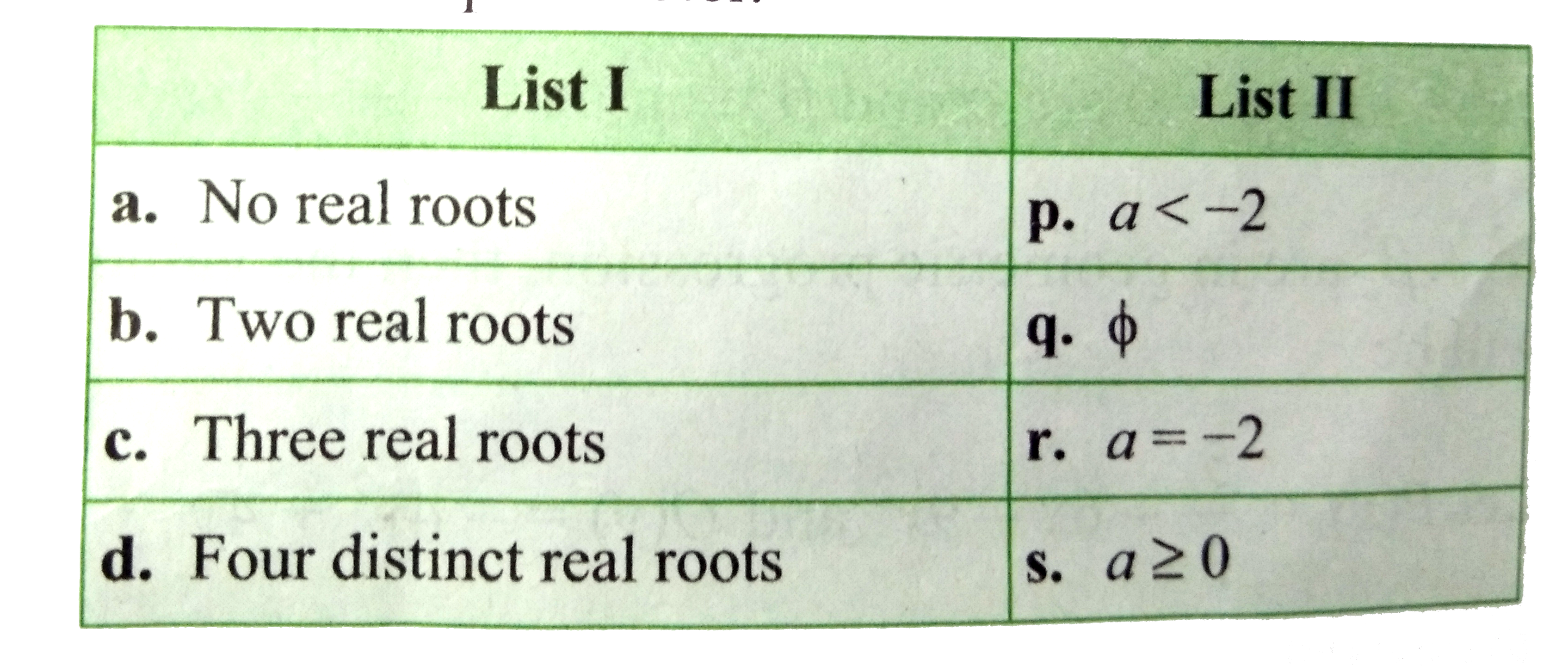If c≠0 and the equation p2x=ax+c+bx−c has two equal roots, then p can beSolution in Bengali
(√a−√b)2
(√a+√b)2
a+ b
a - b
The correct Answer is:1.2
We can write the given equation as
p2x=(a+b)x+c(b−a)x2−c2
or p(x2−c2)=2(a+b)x2−2c(a−b)x
or (2a+2b−p)x2−2c(a−b)x+pc2=0
for this equation to have equal roots,
c2(a−b)2−pc2(2a+2b−p)=0
or (a−b)2−2p(a+b)+p2=0[∵c2≠0]
or [p−(a+b)]2=(a+b)2−(a−b)2=4ab
or p−(a+b)=±2√ab
or p=a+b±2√ab=(√a±√b)2 .
Topper's Solved these Questions
- BOOK - CENGAGE PUBLICATIONCHAPTER - THEORY OF EQUATIONSEXERCISE - Linked Comprechension Type37videos
THEORY OF EQUATIONS
- BOOK - CENGAGE PUBLICATIONCHAPTER - THEORY OF EQUATIONSEXERCISE - MATRIX MATCH TYPE6videos
THEORY OF EQUATIONS
- BOOK - CENGAGE PUBLICATIONCHAPTER - THEORY OF EQUATIONSEXERCISE - Single Correct Answer Type : Exercise89videos
THEORY OF EQUATIONS
- BOOK - CENGAGE PUBLICATIONCHAPTER - STRAIGHT LINESEXERCISE - ARCHIVES (NUMERICAL VALUE TYPE)1videos
STRAIGHT LINES
- BOOK - CENGAGE PUBLICATIONCHAPTER - THREE DIMENSIONAL GEOMETRYEXERCISE - All Questions291videos
THREE DIMENSIONAL GEOMETRY
Similar Questions
Consider an unknow polynomial which divided by (x−3) and (x−4) leaves remainder 2 and 1, respectively. Let R(x) be the remainder when this polynomial is divided by (x−3)(x−4).
If equations R(x)=x2+ax+1 has two distint real roots, then exhaustive values of a are.01:59View SolutionMatch the following for the equation x2+a|x|+1=0 where, a is a parameter.
 04:26View Solution
04:26View SolutionThe value of expression x4−8x3+18x2−8x+2 when x=2+√3
03:49View SolutionFor a point P in the plane, let d1(P)andd2(P) be the distances of the point P from the lines x−y=0andx+y=0 respectively. The area of the region R consisting of all points P lying in the first quadrant of the plane and satisfying 2≤d1(P)+d2(P)≤4, is
08:11View SolutionFind the angle between the line whose direction cosines are given by l+m+n=0andl2+m2−n2=0.
03:19View SolutionIf a,b,c, are roots of the equation x3+px+q=0, prove that ∣∣ ∣∣abcbcacab∣∣ ∣∣=0
08:00View SolutionIf c≠0 and the equation p/(2x)=a/(x+c)+b/(x−c) has two equal roots, then p can be (√a−√b)2 b. (√a+√b)2 c. a+b d. a−b
02:39View SolutionIf a, b, c are roots of the equation x3+px2+q=0 , prove that |abcbcacab|=a3 .
08:05View SolutionIf c≠0 and the equation p2x=ax+c+bx−c has two equal roots, then p can be
06:44View SolutionIf a + b + c = 0 and a≠c then the roots of the equation (b+c−a)x2+(c+a−b)x+(a+b−c)=0, are
04:09View SolutionIf c≠0 and p2x=ax+c+bx−c has two equal roots, then find p.
04:34View SolutionLet α,β the roots of the equation (x - a) (x - b) = c , c ≠ 0. Then the roots of the equation (x−α)x−β)+c=0 are :
03:40View SolutionThe quadratic equation (x−a)(x−b)+(x−b)(x−c)+(x−c)(x−a)=0 has equal roots if
07:34View Solutionc≠0மற்றும் p2x=ax+c+bx−c க்கு இரண்டு சமமான மூலங்கள் உள்ளன எனில் பி காண்க.
06:19View SolutionIf c≠0 and the equation p/(2x)=a/(x+c)+b/(x−c) has two equal roots, then p can be (√a−√b)2 b. (√a+√b)2 c. a+b d. a−b
01:24View SolutionIf c≠0 and the equation p2x=ax+c+bx−c has two equal roots, then p can be
08:39View Solution

